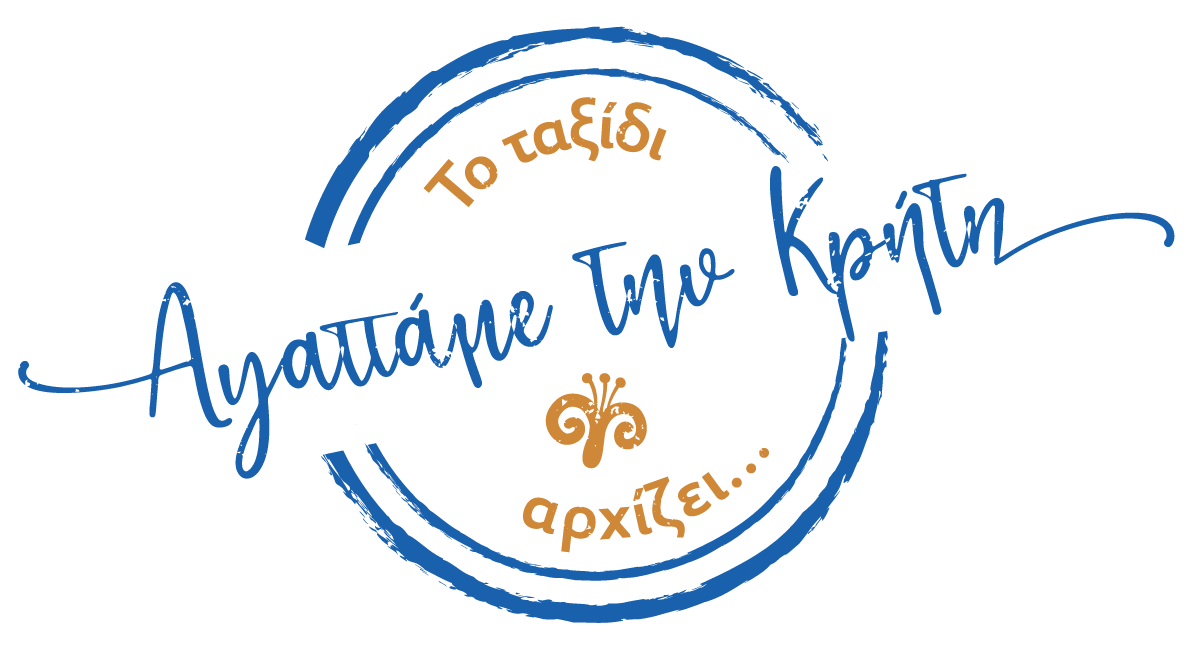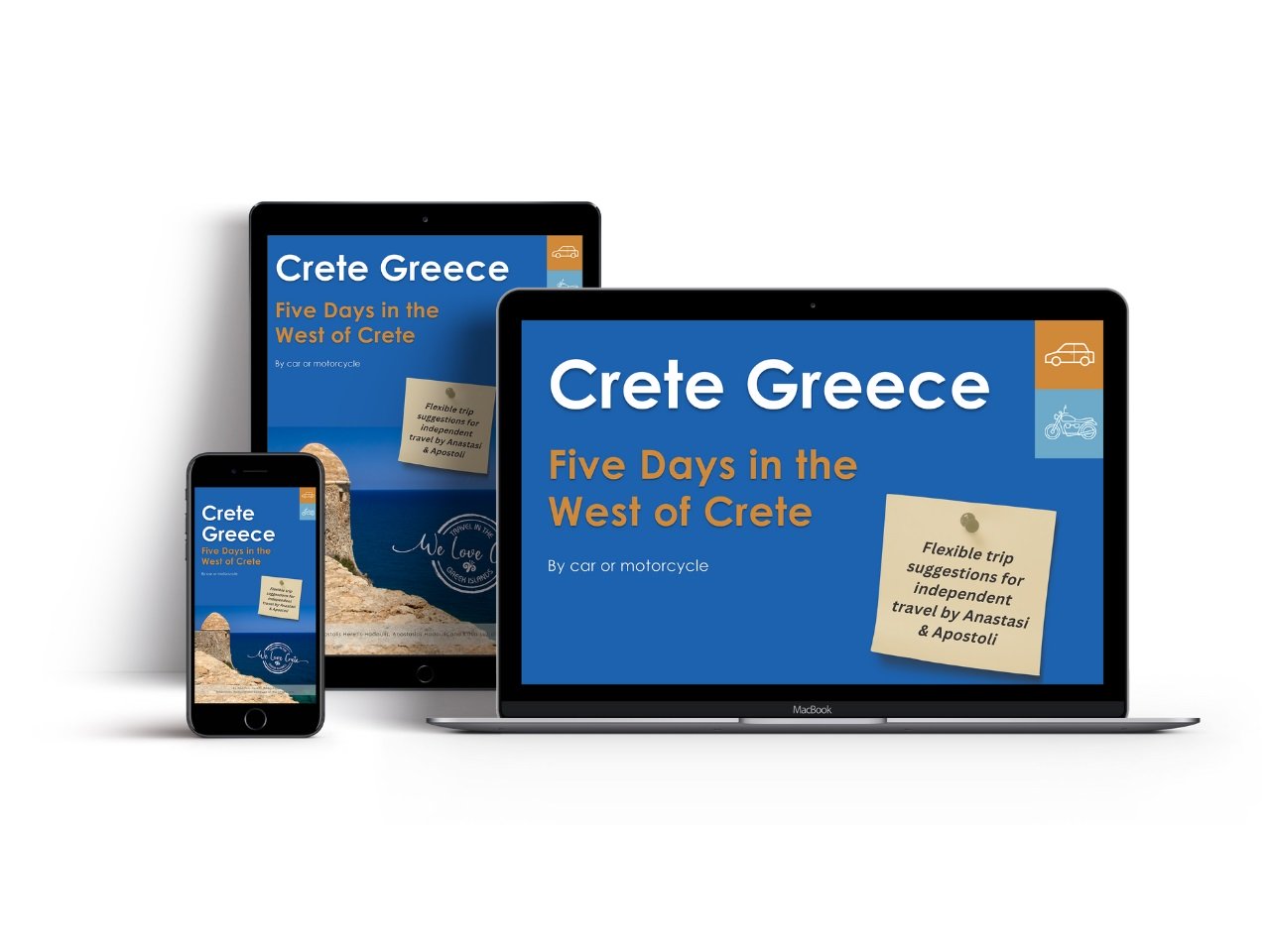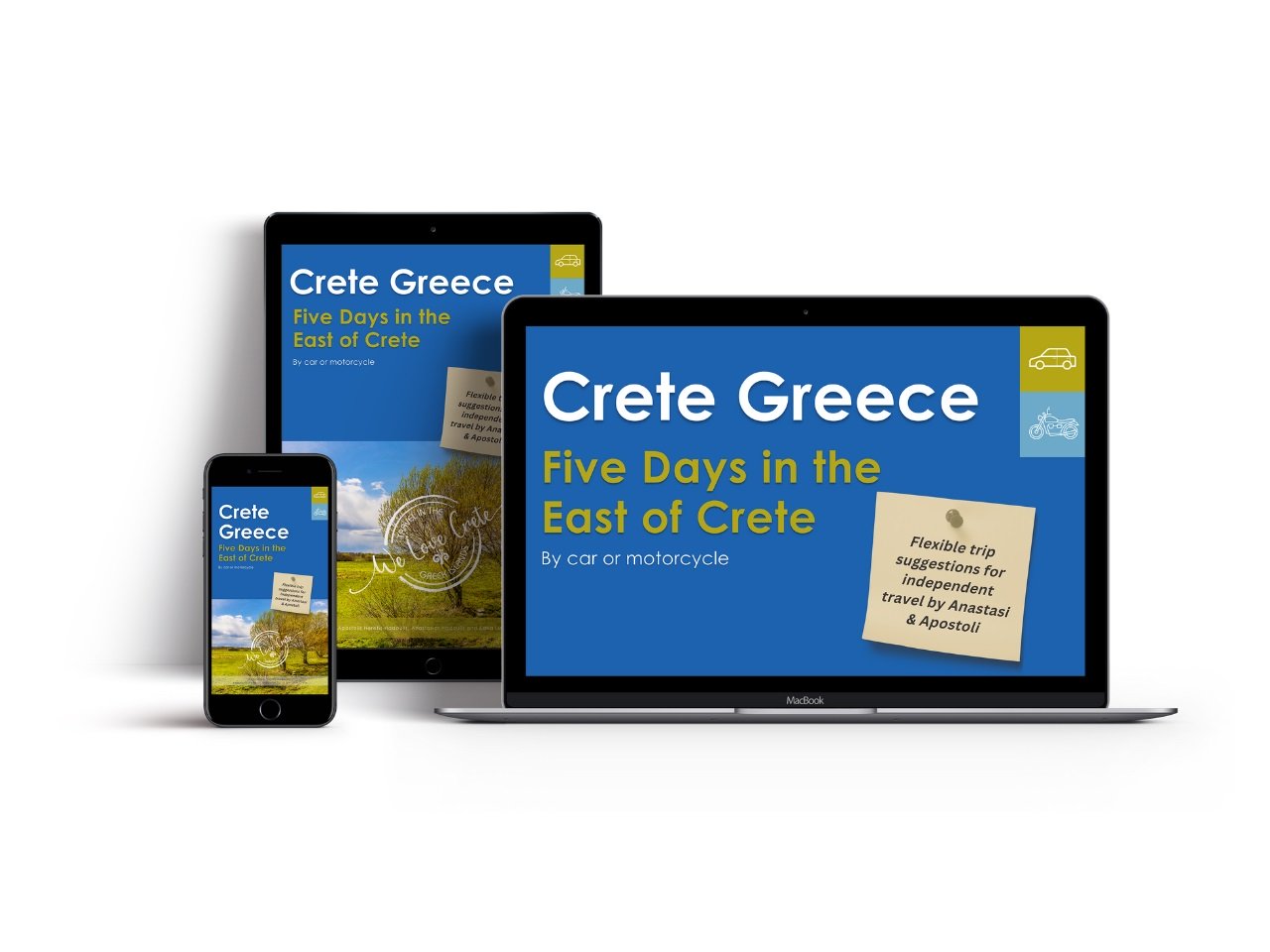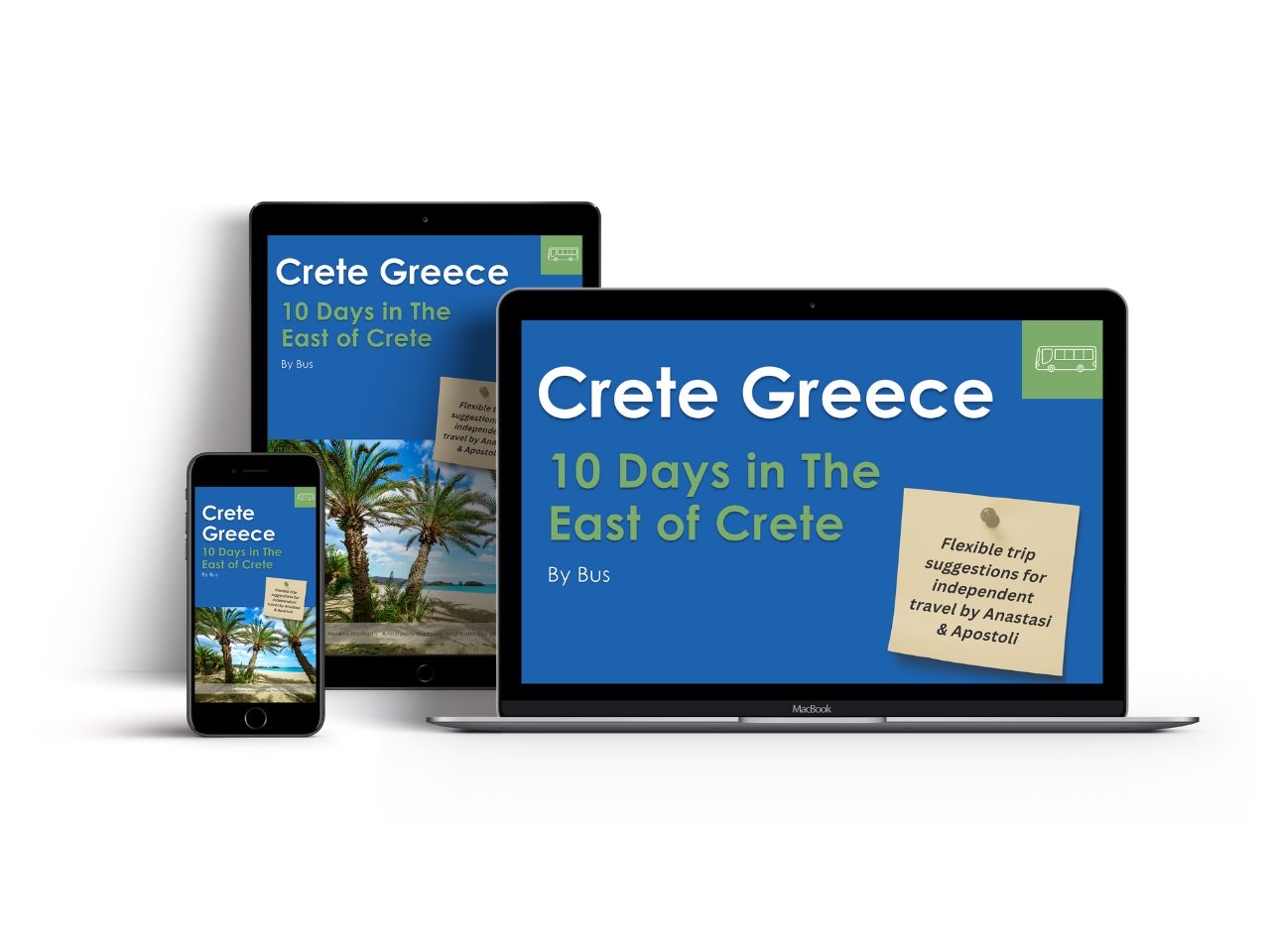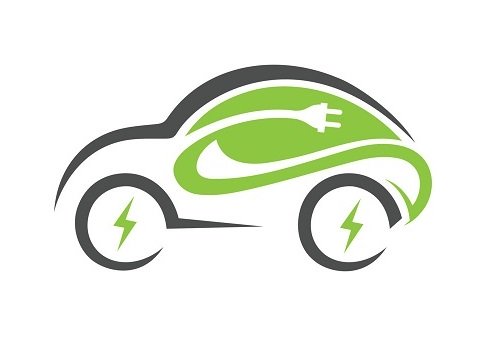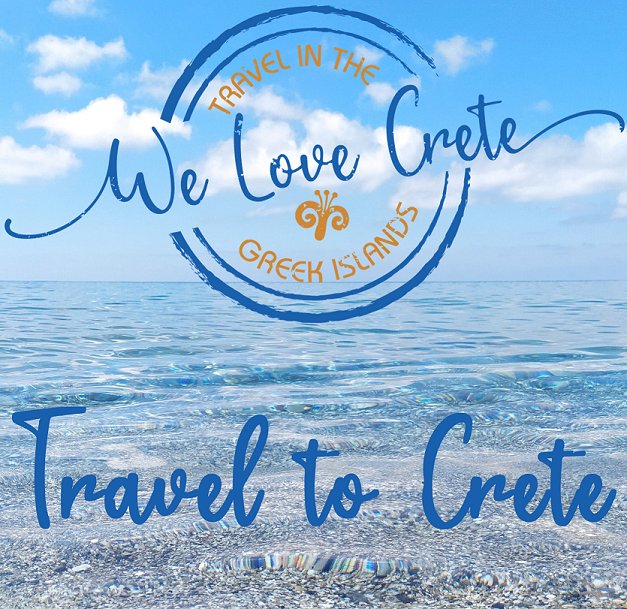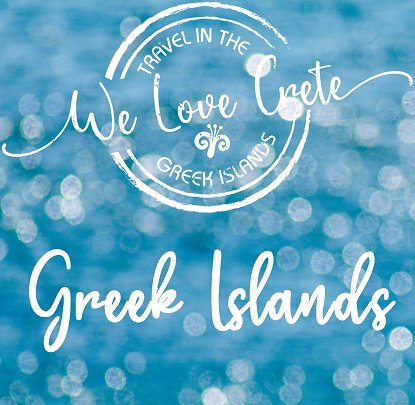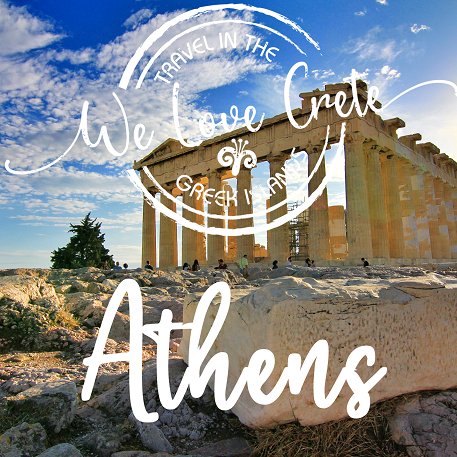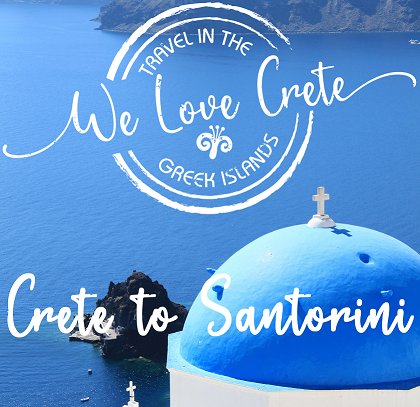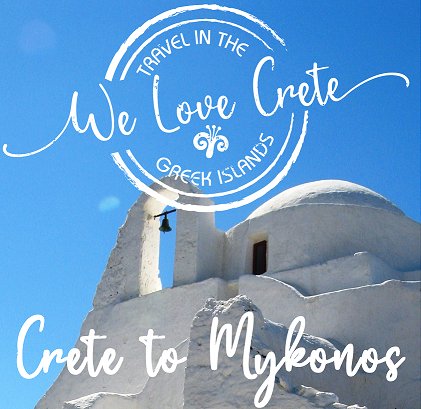This page may contain affiliate links, see our disclaimer here.
The Palace of Knossos
The 'Birthplace of Europe'
By Katia Luz
The Palace of Knossos Κνωσός was the oldest and most sophisticated city of the ancient western world. This site was the first inhabited area of ancient Crete, from as early as 7000 BC, and subsequently became the largest and most influential of Minoan centres.
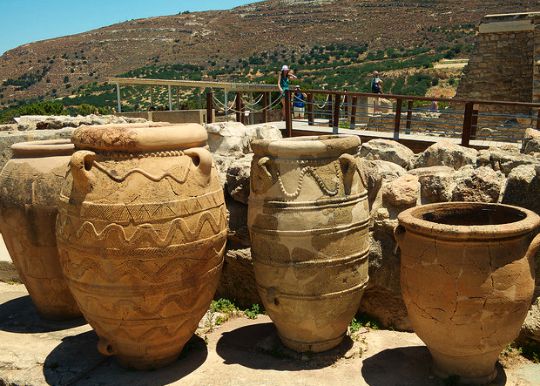
See Knossos in our video below.
The History of The Palace of Knossos
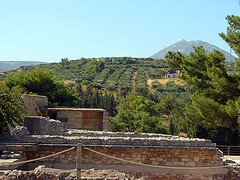
The community on this site reached an incomprehensible level of sophistication, coming to its zenith between the years 2400-1400 BC. The city created here could be deemed modern by today's standards.
Reached by an impressive paved royal road, epic in proportion, the palace sits amid a lush and fertile basin, to this day lined with rows of olive trees and grapevines.
Minoan cities were unique, compared to neighbouring Mycenaean, Spartan and Athenian, in that they did not fortify their towns. This is a clear indication that they where not a warring people, and supported themselves with the trade of their unique agricultural goods and distinct and beautiful artistic crafts such as earthenware, jewellery, cosmetics and perfumes.
The Palace of Knossos Day Tours
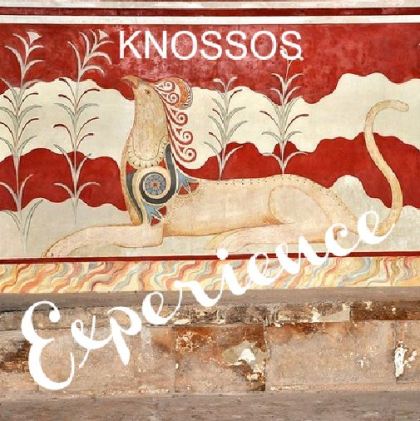
Experience Knossós Palace
- with pick up and drop off from all major centres and hotels, with a
fully experienced guide to interpret the palace ruins. Visit the Museum in Heraklion town.
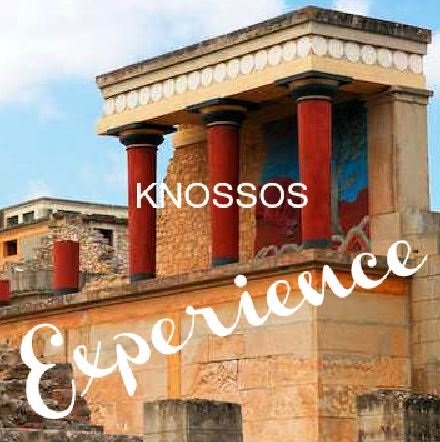
Skip the Line Entry with Local Interpretive Guide - understand the significance of Knossos with an informative, experience local guide to bring the stones alive.
There are plenty more options for organised experiences of Knossos below.
The Palace of Knossos
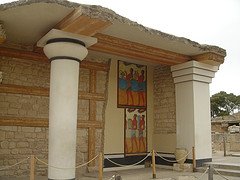
At the centre of the palace stand three and four storey buildings with throne rooms and spiritual chambers, central halls, bedrooms, bathrooms, intricate spiral stairways and light wells.
Also discovered were modern bathrooms with flushing toilets and sophisticated plumbing that fed in fresh spring water and plumbing for taking away waste water. There are tales that mention that the residents had central heating ducted through underground pipe systems utilising local thermal springs, although there seems to be some debate about this.
On the ground level and basements vast storage areas were excavated lined with large earthenware storage jars, ranging in size from rhytons to human size. The entire city was gracefully decorated, with frescoes and wall paintings of griffins, dolphins, bull-leaping figures, male processions with youths carrying ceremonial jars (rhytons) and beautiful women with sophisticated attire convening and enjoying a tête-à-tête.
Frescoes of Minoan Crete
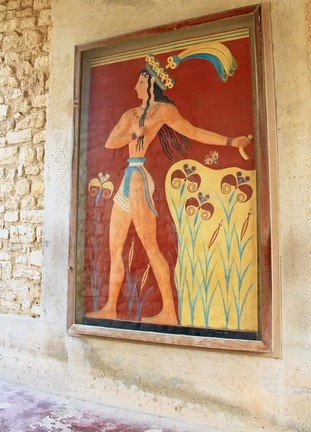
The Prince of the Lilies
The tihografia wall painting of the Minoan prince known as the Prince of the Lilies or the Priest King dates to roughly 1500BC. This painting which was restored by Evans' team, shows the sleek and proud postured Cretan youth with his long curly hair, wearing a headress of lilies.
He is believed to be leading a bull by its tether. It is controversial that in fact this painting may be a fusion of a number or paintings from as many as four paintings from the many stories that had tumbled on top of each other.
The frescoes of Minoan Crete can be seen on site at the Palace, as well as inside the small museum on site and the at Heraklion Archaeological Museum.
The ancient site of The Palace and City of Knossós is located in the central north of the island of Crete in Greece, 5 km from the capital Heraklion.
More on the ancient history of Crete
More about the discovery of the Palace and Sir Arthur Evans
Below is a video of the Palace of Knossos archaeological site as it stands today:
Below is a digital 3D reconstruction of the Palace of Knossos with our modern imagination and technology.
Looking about the Palace
Below are some beautiful images of the Palace of Knossos archaeological site as it looks today:
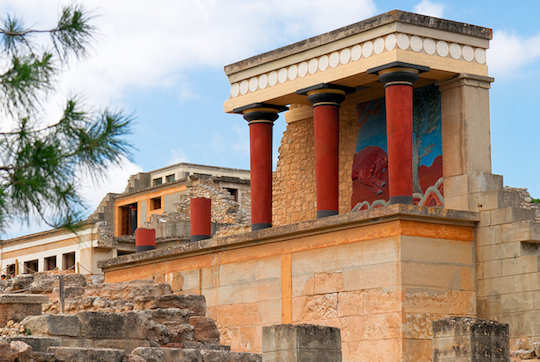 The partial reconstruction is striking at the Propylaeon or Entrance Gate
The partial reconstruction is striking at the Propylaeon or Entrance Gate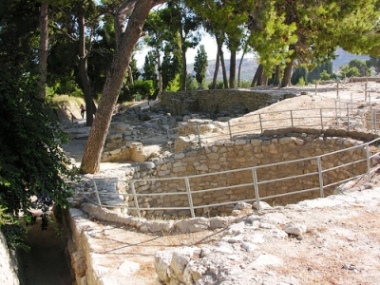 These pits are close to the entrance and are nicknamed 'koulouria' after the circular Greek bread snacks. They are thought to be waste pits.
These pits are close to the entrance and are nicknamed 'koulouria' after the circular Greek bread snacks. They are thought to be waste pits.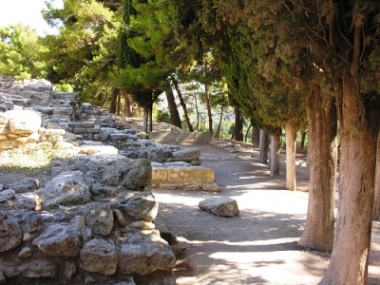 There are some cypress trees near the entrance way.
There are some cypress trees near the entrance way.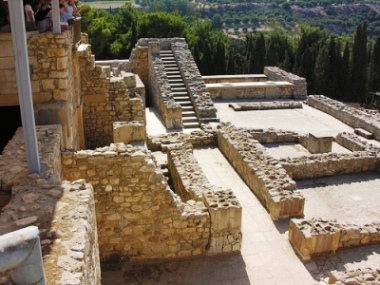 The site is partially reconstructed.
The site is partially reconstructed.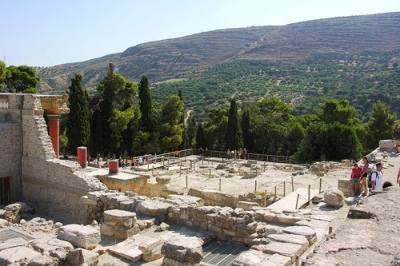 Looking over the valley to the olive groves beyond it is not hard to see why the Minoans chose this fertile location
Looking over the valley to the olive groves beyond it is not hard to see why the Minoans chose this fertile locationOn the Map
Below you will see the location of the Minoan archaeological sites on the island of Crete...
- Knossos Palace
- Malia Palace
- Phaistos Palace
- Zakros Palace
Also shown is the ancient Roman site of Gortyna
Heraklion Town
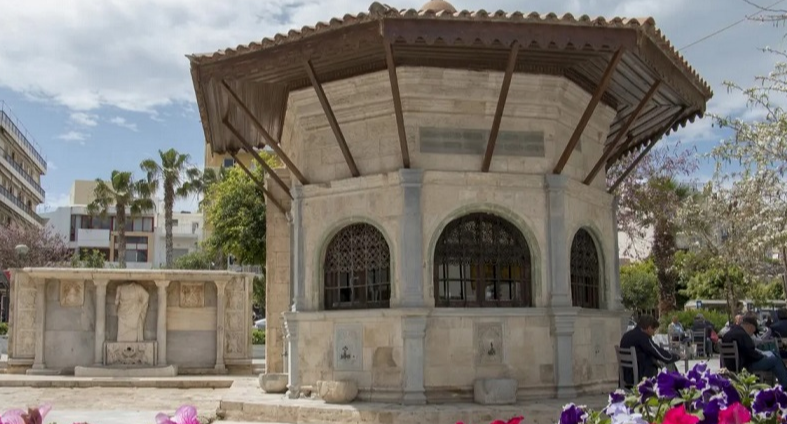
If you do fly into Crete via Heraklion Airport, you may want to stay a while to enjoy the highlights of Heraklion town, which include:
- Liondaria Fountain
- Heraklion Archaeological Museum
- Old Venetian Harbour and Koules Fortress
- Agios Titos Church and Square
- Pedestrian Shopping Streets
- 1866 Local Market
- Koraii Cafes and Bars
- Memorial to Eleftherios Venizelos
- Kournarou Square
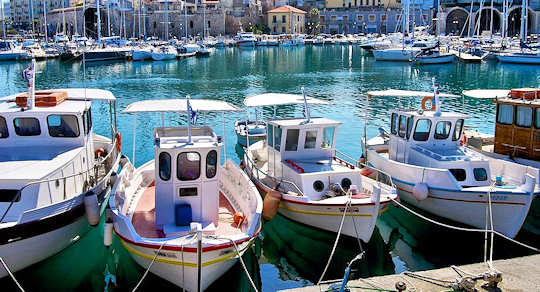 Visit the Old Port of Heraklion, see the Venetian Fortress, the fishing fleet and the Venetian Arsenal, have coffee down by the bay
Visit the Old Port of Heraklion, see the Venetian Fortress, the fishing fleet and the Venetian Arsenal, have coffee down by the bayTrip Guide e-Books
How to include the Palace of Knossos on your independent trip to Crete. Your very own mini-guides from the team at We Love Crete. See the west of Crete on back roads, or choose the east, each of these itineraries includes Knossos.
Our e-book mini guide to the west of Crete by bus also includes Knossos Archaeological site.
Each guide comes with a day by day plan, route map, interactive map and tips for travel in Crete, accommodation and more. Download as a pdf or purchase as a Kindle e-book. Perfect for your exploration of Crete away from the tourist trails and into the hills.
Getting Here
Take a 1 hour flight from Athens to Heraklion with Aegean Airlines or Olympic Air, with many flights available per day.
Or take a 9.5 hour overnight ferry from Pireaus port of Athens to Heraklion port.
More on flights and ferries below.
Car hire in Crete is a really good idea as it is a large island 60 km by 260 km. There is so much to explore.
When you book with our car rental partners - Rental Centre Crete - you are supporting a local company with excellent service and easy online booking. We are sure you will be well looked after by the team. Choose from hybrid, electric or regular vehicles.

We trust you have enjoyed these tips from the We Love Crete team. Evíva!
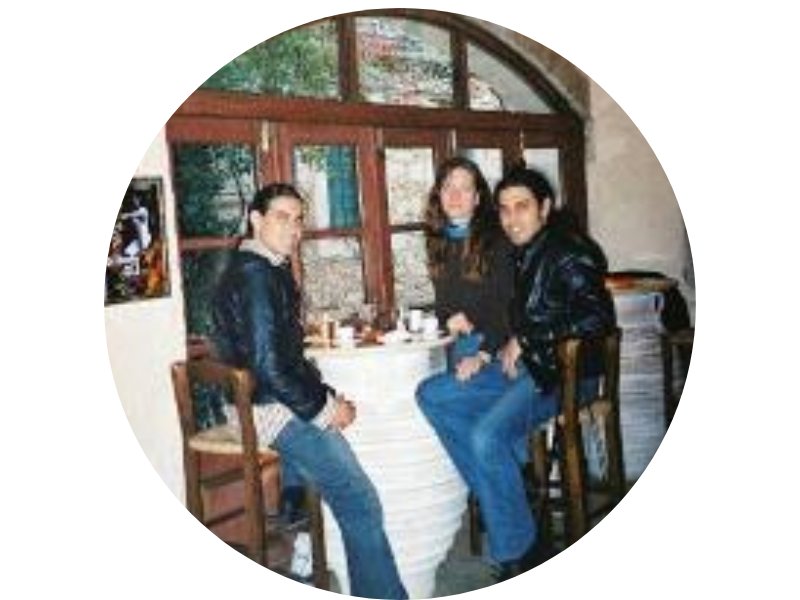
Yiásas!
Anastasi, Apostoli & Katia
are the We Love Crete team
We just love sharing our passion for Crete, Greece and travel
About us Contact Us Kaló taxídi!
- Home
- Crete History
- Palace of Knossos
About the Team
Yiásas!
Anastasi, Apostoli & Katia
are the
We Love Crete team
We just love sharing our passion for Crete, Greece and travel
About us

